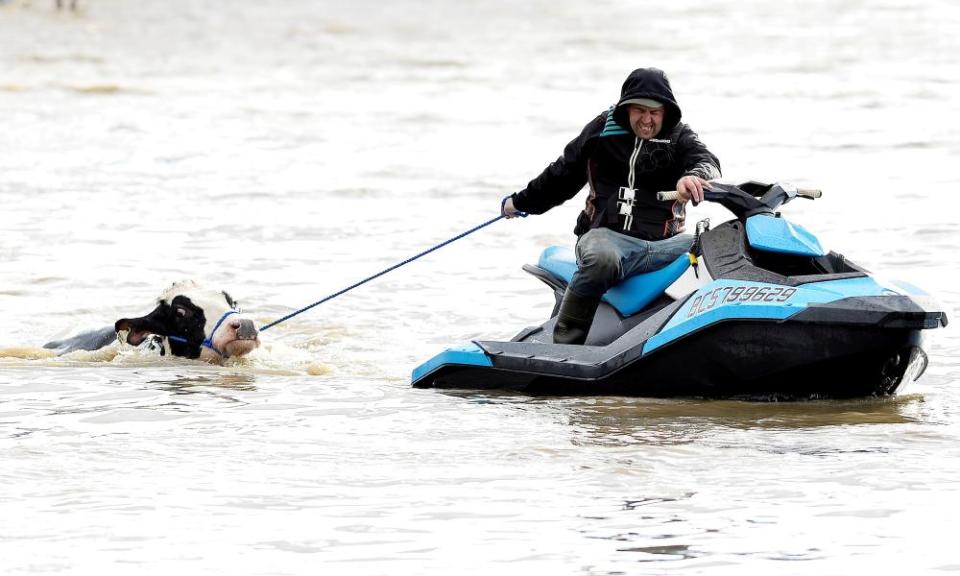‘Heartbreaking’ clean-up of animal corpses as Canada floodwaters ebb

Floods and landslides in British Columbia devastated livestock in ‘easily the costliest natural disaster in Canada’s history’
Floods and landslides that battered the Canadian province of British Columbia last month killed hundreds of thousands of farm animals and forced nearly 15,000 people from their homes, new figures revealed, as officials described the scope of the devastation – and the challenges of recovery.
As many as 628,000 chickens, 420 dairy cattle and 12,000 pigs were killed by the floods. An estimated 3 million bees in 110 hives were also submerged.
Related: Floods and wildfires are now normal life in small-town Canada
“The work by farmers and volunteers and companies to clean out barns, and to remove those animals, continues to be extremely heartbreaking,” said the agricultural minister, Lana Popham, late on Thursday, adding that with drier conditions forecast, the work of removing dead animals from farms could begin.
But the process of draining the Sumas Prairie – a former lakebed where most of the farms are located – could take another another two to three weeks, warned the Abbotsford mayor, Henry Braun. More than 800 farms in the area remained under evacuation order and 700 acres of blueberry crops remain under water.
The public safety minister, Mike Farnworth, said the province was “now on the other end” of three consecutive atmospheric rivers, but confirmed nearly 15,000 people were forced to flee during the floods. More than 4,000 properties remain under evacuation orders.
Numerous highways remain closed and some major routes are still restricted to essential travel only. Repair crews are also likely to face new challenges as freezing temperatures and snow blankets hard-hit areas.
The province has extended its state of emergency until 14 December and fuel rationing is in effect. Trans Mountain, which transports most of the province’s fuel needs, shut down its pipeline in mid-November due to heavy rainfall and flooding.
As the province takes stock of the damage, mounting evidence suggests more could have been done to prevent the catastrophic levels of damage.
A provincial report from 2015 that found the dike that protects the agricultural area of Sumas Prairie from floodwaters was “substandard” and needed maintenance. The report also determined none of the 74 dikes examined in the south-western region of British Columbia fully met the province’s benchmark, in part because of more rigorous construction standards, but also because of cost.
A separate report found the province had been warned more than a decade ago that its flood forecasting centre needed to double its staffing in order to effectively warn residents of impending flood waters – a warning that one thinktank says still has not been acted upon.
Earlier this week, the chair of British Columbia’s Fraser Valley regional district said that despite pleas for help, aid to communities often came too late. “Throughout this event, we have experienced delays in getting funding approvals, and roads, water systems, diking infrastructure, sewer systems and bridges are at serious risk of either washing away or suffering catastrophic damage,” said Jason Lum.
Related: Canada floods leave thousands of farm animals dead and more trapped
There is no price tag yet attached to the damage, but the floods and landslides severed highways, destroyed communities and halted oil and rail shipments.
“Easily the costliest natural disaster in Canadian history. Won’t even be close,” tweeted Blake Shaffer, an economics professor at the university of Calgary.
The wildfires that struck the city of Fort McMurray in 2016 is widely considered to be the costliest natural disaster in Canada, with an insurance loss of nearly C$3.58bn (US$2.8bn). Abbotsford’s Mayor Braun has suggested the damage to his city alone from the floods will be close to C$1n.

 Yahoo Finance
Yahoo Finance